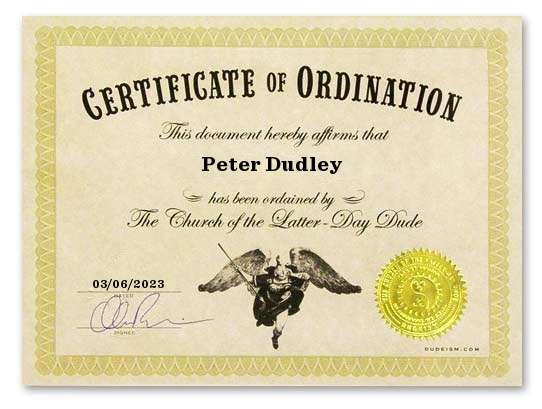What leadership quality do you need to improve most?
I caught up with one of my former clients recently and had a really nice chat. She told me about how work was going, about things with her family, about a new class she’d signed up for.
A few days later, she emailed to ask a favor.
“Please tell me one thing I’ve improved and one thing I need to improve.”
Based on our recent conversation, the first part was easy. During our sessions, which had ended several months earlier, she’d identified four things she wanted to work on, and how she wanted to work on them. I could see improvement in all those areas. The improvement was evident not just in what she told me during our recent conversation, but also in the way she talked about things.
What one thing did she need to improve? That question was more difficult.
Impossible, really.
In fact, it’s the wrong question.
I’m not her manager. I don’t work with her on a daily basis. I don’t see how her colleagues, management, or customers respond to how she shows up.
We hadn’t talked about new outcomes she might want to achieve. Did she want to exert more authority? Build more consensus? Have better balance? Get a promotion? Overcome departmental dysfunction? Have people like her more? Something else?
So, rather than answer her question, I turned it back on her: “I’d be curious to hear what you think you should improve on.”
But that felt like a copout, so I thought more and sent a reply that would be helpful with her self-improvement.
Self-awareness techniques can get you where you need to go
To over-simplify things, self-improvement comes in two flavors:
First is the kind that is contained. You can learn a skill, like how to balance a checkbook or how to plumb a bathroom sink or how to give a presentation. Once you’ve reached a level of mastery, you can continue repeating the task with relatively predictable results. And although these skills get rusty if you don’t keep using them, once you learn them you can recall them without too much trouble.
Second is the kind where “improvement” requires constant attention, recalibration, and self-awareness. For example, if you want to become a more empathetic leader, you can’t simply take a class, pass an exam, and receive your “empathetic leader” license.
Boom! You’re now an empathetic leader! Congratulations. You don’t have to worry about that again. Your employees will now love you.
While I’m sure someone will happily charge you a lot of money to give you an “empathetic leader” license, in reality such a license is about as meaningful as my online ordination.

I view this second kind of self-improvement a bit like sailing. Hear me out.
How do you become a better sailor?
It’s not hard to learn how to operate the various bits of a sailboat. How to raise the sails, adjust trim, move the tiller. But operating the parts of a sailboat is not the same as sailing.

Similarly, it’s not hard to learn techniques of being an empathetic leader. How to listen actively, how to use inclusive language, how to recognize microinequities. But using the techniques is not the same as leading empathetically.
To become a better sailor doesn’t mean being more efficient at pulling on a rope or grinding a winch. That may make you a better crew member, but it doesn’t make you a better sailor.
When you sail, you can pull and release the lines, move the tiller back and forth, tack and jibe, and even wear a fun captain’s hat, but you also need to do so much more. You need to be aware of the environment—changes in the wind and weather, patterns and anomalies in the waves, the effects of tides, other surface traffic and external threats, the depth of the water, the condition of your equipment, and much more. Tightening the jib or moving the tiller are necessary tasks, but there are so many other variables you need to understand in order to know how and when to do those things. Doing them poorly may slow you down, stop you completely, or even capsize the boat or run you into other dangers.
To improve as a sailor, you need to constantly monitor and assess your own performance. Additionally, every time you put to sea, you’re faced with a unique set of conditions.
Similarly, when you run a meeting, you can create space for everyone to be heard, practice active listening, and use inclusive language, but to actually lead with empathy you need to do so much more. You need to understand the greater context in which the meeting occurs—both within the team and outside the team. You need to be aware of other people’s energy, attention level, reactions, psychological safety, fears and aspirations. You need to understand how trust levels and power imbalances may affect things, what the capabilities are of the people you’re leading, and even the cultural and language barriers and assumptions that may exist.
To improve as an empathetic leader, you need to constantly monitor and assess your own performance with awareness of all these variables. Additionally, every time you interact with your team, you’re faced with a unique set of conditions.
Detached self-observation is better than methodology
So, after thinking about all this, I advised my client that the one thing she should continue to improve was her self-awareness.
Simply continue the practice she had already begun of observing her own performance as objectively as possible, with an ever-increasing awareness of how other people responded to her in each unique situation.
She’d also gotten feedback from someone else who was more specific. They said her presentation style lacked “warmth.”
In my opinion, while that is more specific, it is far less helpful. Possibly even wrong, when you take into account this person’s team, role, subject area, organizational culture, and authentic leadership style.
Not every leader needs to be warm. Not every team wants warmth from their leader. There is no one style of leadership that is best in all situations. That’s what makes leadership hard.

The world is filled with consultants, instructors, and coaches who preach their favorite methodology for being an effective leader. Most of those methodologies are useful up to a point.
Methodologies feel reassuring because they give us a rulebook for success. But to do so, they remove nuance and context. They are the paint-by-numbers of the business world. You can get a passable, standardized result if you just follow the rulebook.
But if you’re really interested in being a great leader, no methodology will get you there. Just like no paint-by-numbers template will ever make you a great artist.
Great leadership requires constant attention to context, nuance, situation, environment, and more.
Taking a class or workshop can help you get better at the individual skills leaders employ in the course of leading people and teams. But Improving as a leader requires a dedication to self-awareness and self assessment.
This is why I love being a practitioner of leadership coaching. My clients are smart, capable, and committed to their own growth and development. I help them identify their leadership style, how that style helps or hinders them, and what they want to change to become the great leaders they envision themselves as.
Getting there requires that they be able to observe their own performance with detachment, understand the impact of their actions without judgment, and be able to take proactive steps toward the outcomes they’re aiming for.
If you’d like some help with that as well, let’s talk.



1 Comment
Why a leader’s opinion on working from home or returning to the office shouldn’t matter - Gray Bear Coaching LLC · March 22, 2023 at 12:39 am
[…] tools is self-awareness. Not only do you need to know your people and what drives each of them, but you need to understand yourself well enough to recognize when you’re getting in your own […]